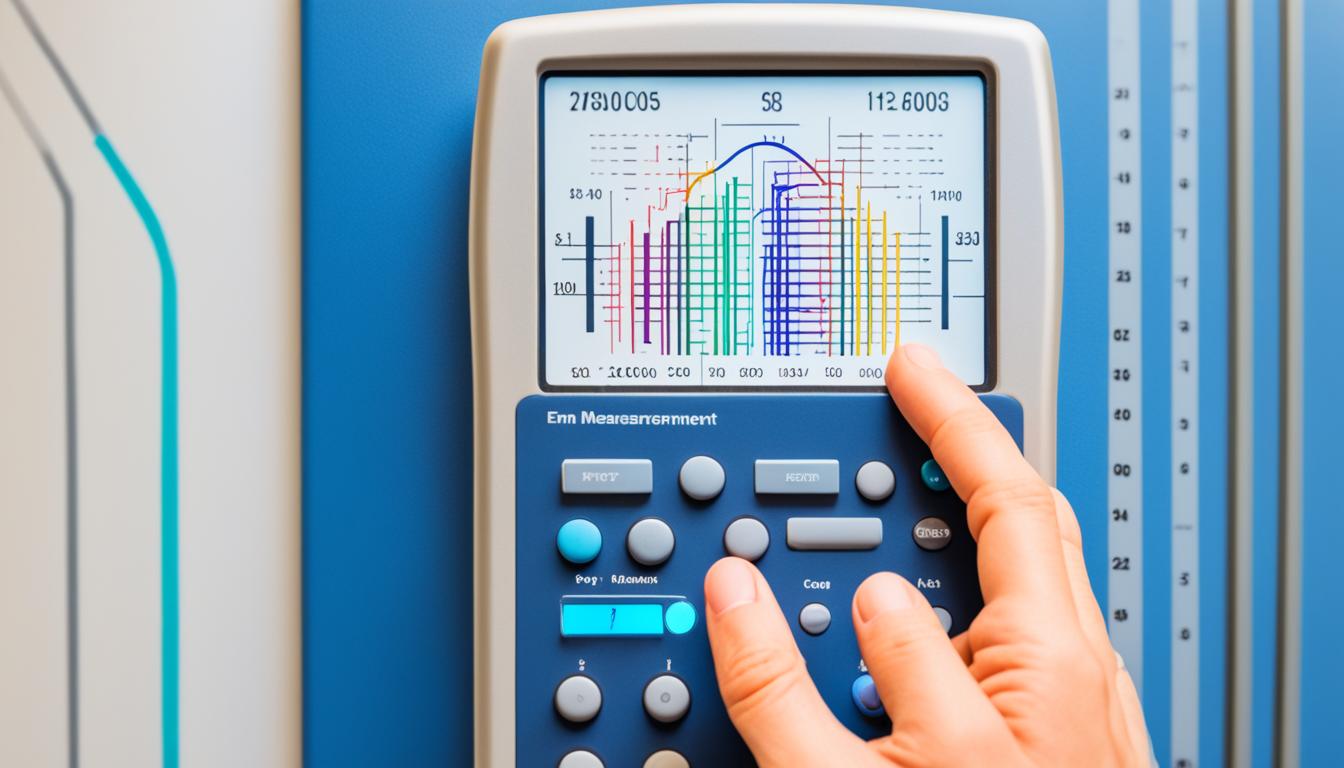Disclosure: This Post Contains Affiliate Links; We earn a commission on purchases.
Welcome to our beginner’s guidebook review on understanding electromagnetic fields (EMFs). In this guide, we will provide an overview of the basics of EMFs, their potential impact on our health, and practical tips on how to protect ourselves against them. Whether you are new to the topic or seeking to expand your knowledge, this guidebook is designed to equip you with the necessary information to navigate the world of EMFs.
EMFs are electromagnetic fields created by electrically charged objects. While some EMFs occur naturally, like those from the sun or the Earth’s magnetic field, others are man-made and generated by electronic devices we use daily. Understanding the different types of EMFs and their sources is crucial in order to minimize exposure and safeguard our well-being.
This guidebook provides a comprehensive overview of EMFs, covering common sources found in our homes and workplaces. It also delves into the importance of using EMF meters to measure exposure levels and explores the various options for EMF protection products. Whether you are interested in hiring an expert or conducting your own testing, this guidebook will help you make informed decisions to reduce your EMF exposure.
Key Takeaways:
- EMFs are energy fields created by electrically charged objects.
- There are natural and man-made sources of EMFs.
- Understanding the basics of EMFs is crucial in minimizing exposure.
- EMF meters can help measure exposure levels in your environment.
- Using EMF protection products can provide an extra layer of defense.
What are EMFs? – The Basics
EMFs, or electromagnetic fields, are energy fields that are created by electrically charged objects. These fields can occur naturally, such as from the sun or the Earth’s magnetic field, but they can also be man-made.
Man-made EMFs are generated by various electronic devices and appliances, including power lines, Wi-Fi routers, cell phones, and smart meters. These sources emit electromagnetic radiation that can potentially impact our health.
There are four main types of man-made EMFs:
- AC magnetic fields: These EMFs are produced by power lines, electrical wiring, and appliances that use alternating current.
- Radio frequency fields: These EMFs come from wireless communication devices like cell phones, Wi-Fi routers, and Bluetooth devices.
- 5G: This type of EMF is a specific subset of radio frequency fields associated with the latest mobile network technology.
- AC electric fields: These EMFs are produced by sources of electricity in our surroundings, such as power outlets and power cords.
Understanding the basics of EMFs is crucial for minimizing our exposure and protecting our health. By being aware of the types of EMFs and their sources, we can make informed decisions and take necessary precautions to reduce our EMF exposure.
EMF Meters & EMF Protection
To effectively reduce exposure to man-made EMFs, it is important to have an EMF meter to measure the levels of EMFs in your environment. EMF meters are devices that can detect and quantify the strength of different types of EMFs. By using an EMF meter, you can identify the sources of high EMF levels and take necessary steps to mitigate your exposure.
Additionally, EMF protection products, such as shielding materials and devices, can help create a barrier between you and the EMFs. These products are designed to block or reduce the penetration of EMFs into your living space, providing an extra layer of protection.
Whether you’re concerned about the EMF levels in your home or looking to achieve a healthier living environment, investing in an EMF meter and exploring EMF protection options can significantly contribute to reducing your exposure and improving your well-being.
| Benefits of EMF Meters | Benefits of EMF Protection |
|---|---|
|
|
By utilizing both EMF meters and EMF protection products, you can have better control over your exposure to man-made EMFs, ensuring a safer and healthier living space for yourself and your loved ones.

Investing in EMF meters and protection products is a proactive step towards reducing the potential risks associated with EMF exposure. By accurately measuring EMF levels and implementing effective shielding measures, you can minimize your exposure and create a healthier environment within your home or workplace.
Common EMF Sources in Your Home
Our homes are filled with various sources of electromagnetic fields (EMFs), and being aware of these sources is crucial in minimizing our exposure and promoting a safer living environment for ourselves and our families.
EMF Sources in Bedrooms:
- Bedside Lamps
- Alarm Clocks
- Electric Blankets
EMF Sources in Living Rooms:
- Wi-Fi Routers
- Televisions
- Gaming Consoles
EMF Sources in Children’s Rooms:
- Baby Monitors
- Electronic Toys
Identifying these common EMF sources allows us to take proactive steps in reducing our exposure. By implementing strategies such as keeping electronic devices away from our bedrooms, using wired internet connections instead of Wi-Fi, and choosing low EMF emitting products, we can create a healthier living space.
Remember that education is key in understanding the potential risks associated with EMF exposure. An informed approach empowers us to make practical decisions to safeguard our well-being.
Testing: Hire an EMF Pro or DIY?
If you’re concerned about the EMF levels in your home, you may be wondering whether to hire an EMF specialist or conduct the testing yourself. Let’s explore the benefits of each option to help you make an informed decision.
Hiring an EMF Specialist
When you hire an EMF specialist, you gain access to professional expertise and a comprehensive assessment of your living space. These specialists have the necessary knowledge and experience to accurately measure the EMF levels in your home. They use specialized equipment to conduct thorough testing and provide you with detailed recommendations to reduce your EMF exposure. By hiring an EMF specialist, you can have peace of mind knowing that your testing is being done by a trained professional.
DIY EMF Testing
On the other hand, if you prefer a more cost-effective approach and are willing to learn and follow proper testing protocols, DIY EMF testing can be a viable option. There are various EMF meters available for purchase that allow you to measure the EMF levels in your home yourself. With proper guidance and understanding, you can conduct basic measurements and identify areas with high EMF levels. DIY EMF testing empowers you to take control of your environment and make informed decisions to reduce your exposure.
It’s important to note that while DIY EMF testing can be useful, it may not provide the same level of accuracy and expertise as hiring a specialist. If you have specific concerns or require a detailed assessment, consulting an EMF expert may be the best course of action.
Ultimately, the choice between hiring an EMF specialist or conducting DIY testing depends on your budget, level of expertise, and the complexity of your EMF concerns. Consider the pros and cons of each option and prioritize what is most important to you in terms of accuracy and peace of mind.
| Choosing an EMF Testing Option | Pros | Cons |
|---|---|---|
| Hiring an EMF Specialist |
|
|
| DIY EMF Testing |
|
|
Remember, whether you choose to hire an EMF specialist or conduct your own testing, the goal remains the same: to identify and reduce your exposure to potentially harmful EMF levels. By taking action and being proactive, you can create a safer living environment for yourself and your loved ones.

Conclusion
EMF education and awareness are crucial in today’s digital age. Understanding the potential risks of electromagnetic fields (EMFs) and taking proactive steps to protect ourselves and our loved ones is of utmost importance. The Beginner’s Guide to EMFs serves as a valuable resource in providing comprehensive knowledge and practical tips to reduce exposure and ensure EMF safety.
Whether you choose to hire an EMF specialist or take the DIY approach, being aware of common EMF sources is essential. By identifying and minimizing exposure to EMF-emitting devices in our homes, such as Wi-Fi routers, cell phones, and electric blankets, we can create a safer living environment for ourselves and our families.
Utilizing EMF meters and protection products can also greatly contribute to reducing exposure. By measuring EMF levels with an EMF meter, we can identify high EMF areas and take necessary steps to minimize exposure. Additionally, employing EMF protection products, such as shielding materials and devices, can create a barrier against EMFs and provide an extra layer of protection.
Together, through EMF education, awareness, and implementing protective measures, we can prioritize our health and well-being in the face of advancing technology. By taking these proactive steps, we empower ourselves to safeguard against EMFs and create a healthier and safer environment for ourselves and future generations. Let’s cultivate EMF awareness and make EMF safety a top priority in our lives.
Source Links
- https://emfguide.com/emf-books-and-emf-videos/
- https://emfguide.com/
- https://www.goodreads.com/book/show/49625819-emf-d

Subscribe to Our Newsletter










